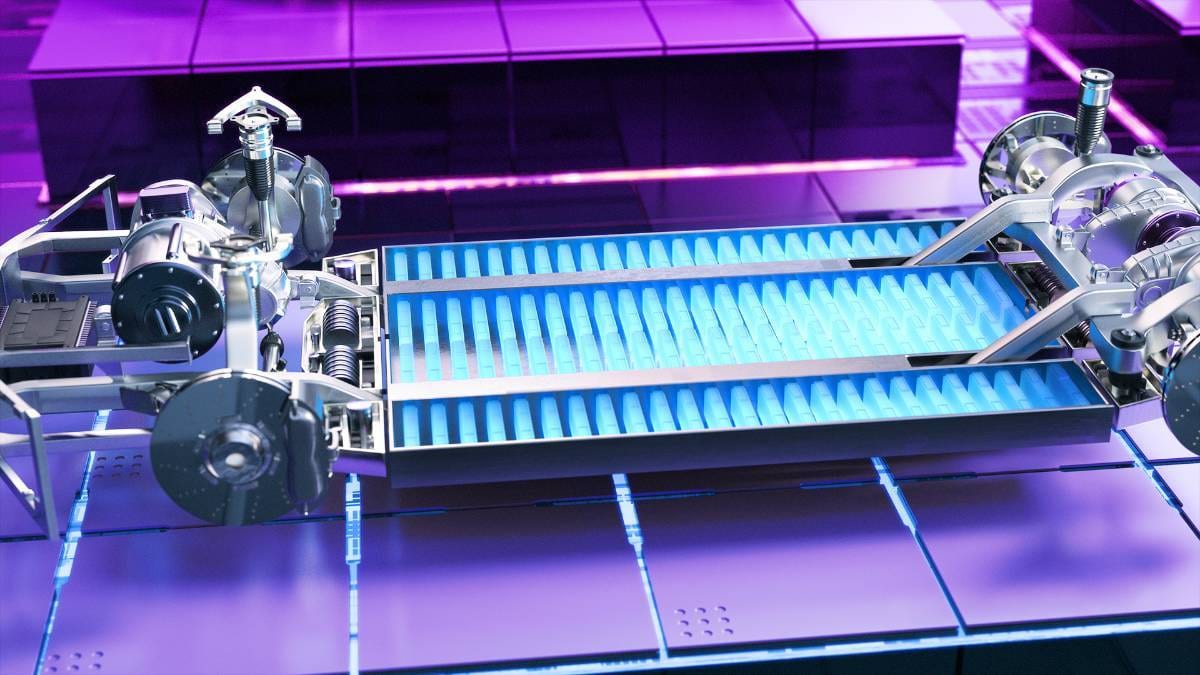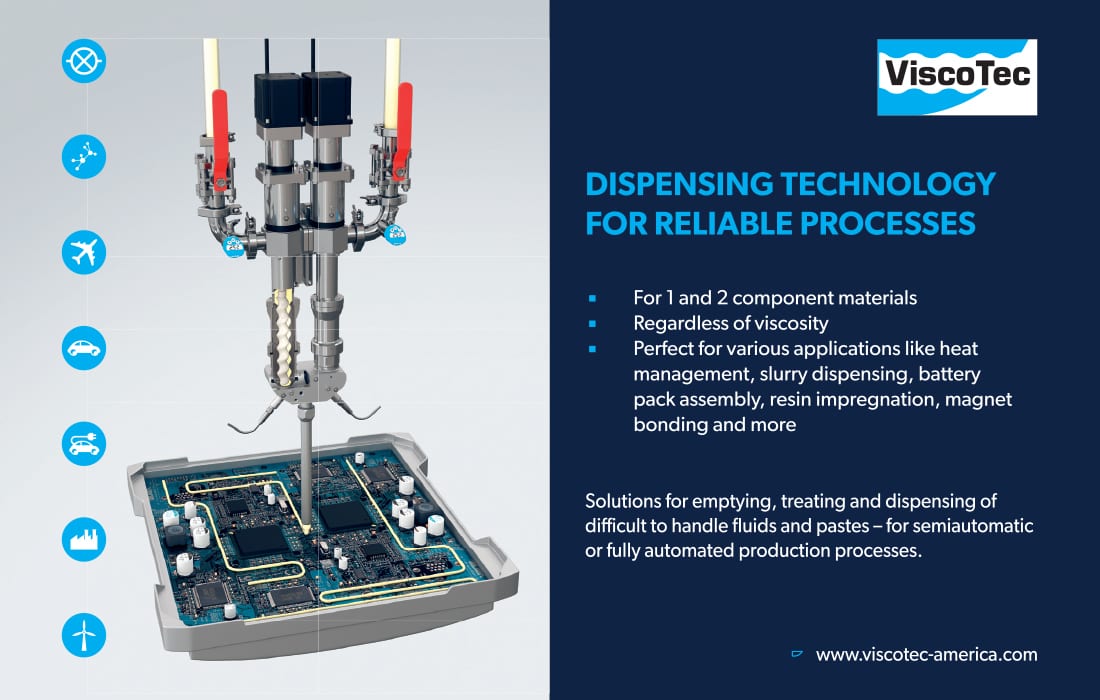CONTACT
Austin

Small sensors play a big role in EV efficiency and performance.
Making Sense of Battery Management System Sensors
John Challen // Contributing Writer
Electric vehicles need sensors to monitor battery current, temperature and voltage. Illustration courtesy TE Connectivity
Small sensors play a big role in EV efficiency and performance.
John Challen // Contributing Writer
Making Sense of Battery Management System Sensors
Whether it rolls, floats or flies, every electric vehicle needs sensors to monitor current, temperature and voltage. Battery management systems (BMS) are the “brains” responsible for the efficiency, safety and longevity of lithium-ion batteries. The primary role of a BMS is to ensure the battery operates within its safe operating area by continuously monitoring its current state and logging performance data in real-time.
Battery management is now front and center in vehicle development due to the fact that it is at the heart of everything that an EV has to offer. Driving range, performance and charging times all depend upon a strong and stable battery management setup.
Sensors are required to monitor the battery and power train system, and ensure that the demands of drivers can be met over a sustained period of time. One company at the forefront of BMS technology is TE Connectivity, an American-Swiss operation that designs and manufactures a wide variety of connectors, sensors and other devices
From its headquarters in Schaffhausen, Switzerland, TE Connectivity works with numerous OEMs around the world as they look to transition from gas to electric power trains. Its line of passive, active and Hall current sensors are integral components of EVs, responsible for monitoring the health and state of batteries.
TE's sensors manage the current inside battery units and power electronics, such as inverters. In addition, the company’s compact sensors support reliable temperature sensing.
"If we really want to commit to emission targets globally, there is no way around improving electric vehicles,” says Monika Kuklok, director of product management for transportation sensors at TE Connectivity. “While I used to think that roughly 40 percent of vehicles would be electric by 2033, I now think that [threshold] will be reached before then.”
For that to happen, of course, improvements in charging times and vehicle ranges need to take place, which is where the likes of TE comes in. Current sensors for battery management systems do a lot, but there is a lot of R&D work going on.
“There are different architectures and technologies used today and the market is in flux,” claims Kuklok. “Currently, we are between three sensor technologies: shunt-based, magnetic-based and fluxgate.
Among those options, shunt is the one that we believe in the most. That’s not saying that the others don’t offer a viable solution, but the shunt-based technology has advantages.
“One of them is accuracy,” explains Kuklok. “It gives you the best idea of what is going in and out of the BMS. There are also advantages when it comes to monitoring maximum overcurrent and degraded accuracy measurement, plus the shunt-based technology is robust against magnetic fields.”
“The other advantage is that shunt is a very simple and cost-effective solution,” adds Kuklok. “When you think about how you would integrate the technology into a bigger system, all of these factors make a difference. Cost is a big factor in electric vehicles. [It] will [determine] the technology that’s ultimately used.”
TE Connectivity has integrated a negative temperature coefficient (NTC) measurement into the setup. “When you have high currents running, you can get heat, which is never good,” says Kuklok. “The integration of an NTC is something we hold a patent on and we believe [will provide] customers some additional benefits, such as giving an even quicker signal if the temperature reaches a critical state.”
Continuously monitoring and managing the flow of power in, out and around high voltage battery modules are essential functions of battery management systems. Illustration courtesy TE Connectivity

Currently, there are passive shunt-based products available from TE, but the next development stage from the company will be active shunt. “This evolution moves away from an analog signal and instead runs information on a digital output,” explains Kuklok. “However, there are so many different architectures around at the moment that each OEM is trying to figure out whether it should use a standalone current sensor or integrate it somewhere within the system.
“[Engineers] might also be questioning if they need an active shunt—and if so, how many—and contemplating where to put the sensor,” adds Kuklok. “I don't believe there will be just one solution. We will see different options coexist for quite some time.”
According to Kuklok, TE is working on alternatives. “We don't have fluxgate, but we do offer a hybrid between shunt and magnetic,” she says. “That is also related to the ability to deal with higher currents, so the combination can serve up to 3,000A, or even 4,000A. That is where the hybrid offers advantages and why we are investigating it as a possible solution.”
Battery management sensors will also play a critical role in next-generation recharging systems. “When it comes to the current sensors—and the contribution they can make to charging—it is really about the level of accuracy in communicating the state of charge,” says Kuklok.
“If you look at the [options] today, there isn’t a really high level of accuracy,” claims Kuklok. “You don't exactly know how much of the battery has charged and how much still needs to be charged. So, that’s really where a current sensor comes in play.

Sensors help monitor battery modules to prevent weak performance or failure. Photo courtesy TE Connectivity
“The more accurate you can get, the more current you can [use to] measure the state of the charge,” Kuklok points out. “And, the easier it is to work out how many minutes of charging you actually need.”
Kuklok believes that some products currently in development will push the boundaries of what is possible, and that the elusive eight-minute charging time target (equivalent to the amount of time it typically takes to refuel a gas-powered vehicle) will be possible with the help of improved sensor technology.
“[Just a few years ago], people were trying to prove that it was possible to actually run an electric vehicle,” says Kuklok. “Today, they are everywhere on the road, with longer driving ranges. If you think about the technological progress that has been made [recently], it's tremendous. So, it’s now down to us to squeeze out anything we can to get to that highest state of accuracy with the sensors.”
Modular System Is Designed to Test Battery Management Systems
dSPACE GmbH has developed a modular system that enables engineers to test battery management systems. Its core component is a high-precision cell voltage emulation board.
“Battery management systems are crucial for the smooth operation of lithium-ion batteries, as they manage the efficient use of available capacity, ensure optimum temperatures, and avoid overcharging, as well as deep discharges,” says Stefan Walter, product manager for electromobility and electric drives at dSPACE. “High-performance energy storage systems are gaining in importance for electromobility applications, where increasingly demanding performance requirements call for battery systems with ever higher voltages.
“With the new cell voltage emulation board and the scalable system concept, we [provide] a powerful [system] for testing battery management systems at the high-voltage level that satisfies even the most demanding test requirement,” claims Walter. “[Engineers] will be able to effectively validate and optimize their BMS, thereby benefiting from shorter time to market.”
The system supports the validation of battery management systems up to 1,500 volts. The low-latency, real-time-capable integration of the cell voltage emulation to the SCALEXIO system via IOCNET allows for fast updates of the individually emulated cell voltages independent of the number of cells and battery size.
According to Walter, the modular concept makes the system scalable and flexible. In addition, he says a safety compartment concept makes it easy to wire the cell channels, reduces the length of the wires to the test system and allows for easy calibration of the individual cells. Integrated fault simulation lets engineers simulate electrical faults, such as short circuits or cable breaks, as well as defective battery cells.
“It is also possible to integrate FPGA applications for faster interaction with the BMS under test,” says Walter. “This opens up new ways to emulate cutting-edge technology, such as online electrochemical impedance spectroscopy, with high precision. The new cell voltage emulation board ensures cell voltage generation with high precision down to 300 µV.”

ABattery management systems are crucial for the smooth operation of lithium-ion batteries. Illustration courtesy dSPACE GmbH

